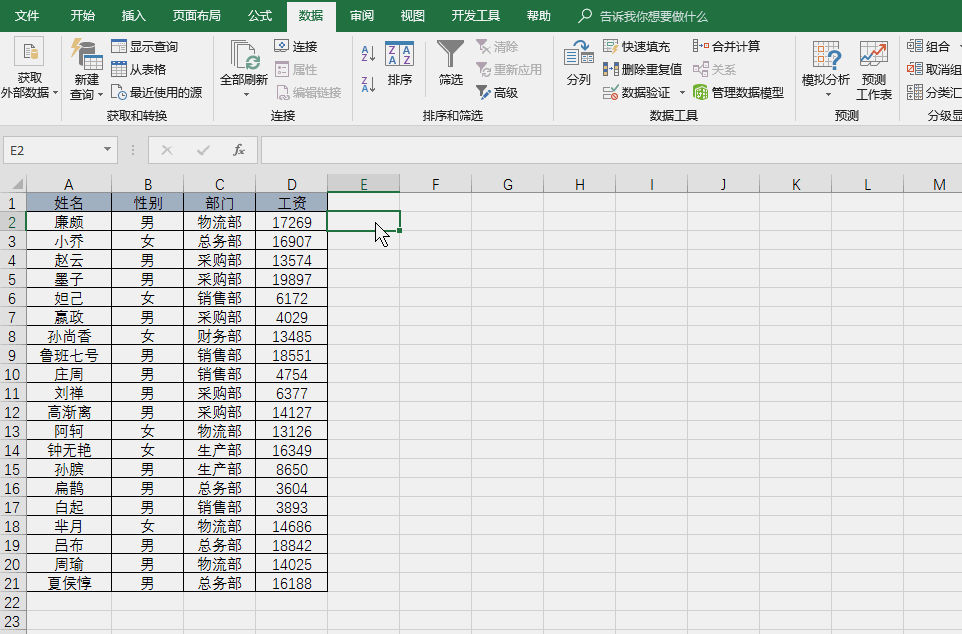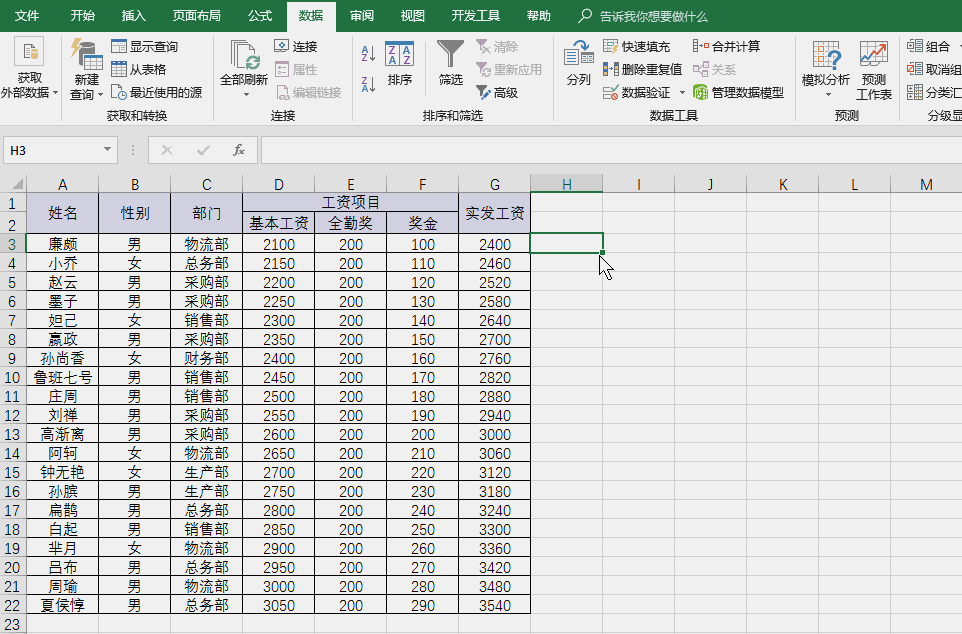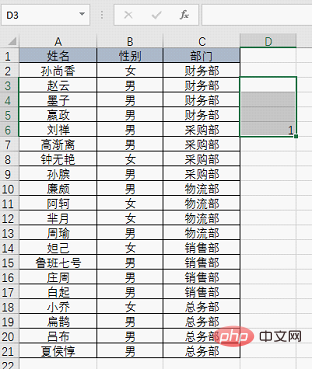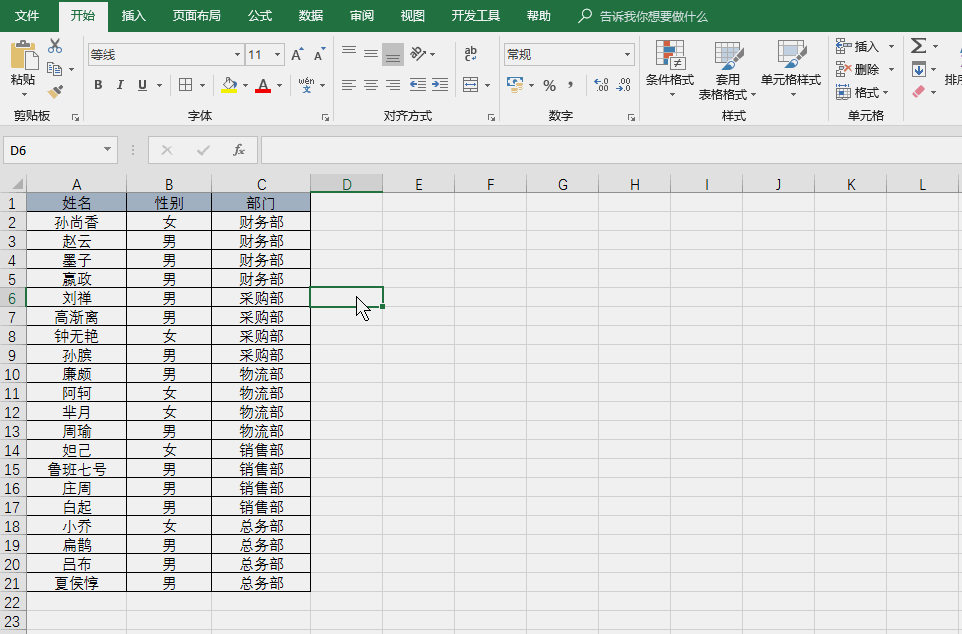Excel skill sharing: Let's talk about how to insert blank rows in batches
A simple Excel method of inserting blank rows every other row has so much knowledge. Whether you want to insert several rows every few rows, this tutorial has the answer you want. These seemingly complicated situations can actually be solved with just some sorting and positioning skills. Isn’t it exciting? Hurry down and see how to batch insert rows in Excel!

When it comes to how to batch insert rows in Excel, the first thing many people think of is salary slips. Yes, you do need to insert blank rows when making salary slips, but besides salary In addition to strips, there are many places where the technique of inserting blank lines is used. In comparison, the method of making salary strips is already the most basic skill. So where can you use inserting blank lines, and what are some useful techniques? Today I will bring you a special topic on Excel interlaced rows. Don’t just ignore the practice!
1. Insert every other row in Excel
Let’s use the salary stub as an example. I believe this method is familiar to everyone, it is the auxiliary column. The sorting method inserts blank rows. Please see the animation demonstration for the specific operation:

#The operation steps are also relatively simple. Insert a column of sequential numbers, copy it once, and then sort to complete the operation ( Today we focus on the method of inserting blank rows, and the method of filling data will not be considered).
2. Insert two rows every other row in Excel
The next step is to upgrade the difficulty. The header of some salary slips is not one row but two rows. At this time, you need to insert two blank rows in batches. Let’s take a look at the animation demonstration:

Compared with the previous operation, when only copying the sequence number Just one more time. Through these two examples, we can also summarize a rule. When inserting multiple rows every other row, you need to insert several rows and copy the sequence number a few times.
3. Insert a row every other row in Excel
Sometimes we need to insert a blank row between multiple rows in our table, such as the following This data requires inserting a blank row every four rows:

The operation at this time is different from the previous one. The key point of the operation is to insert the blank row below the position. Enter 1, and then select four cells (if you are inserting every five rows, select five cells here):

Double-click to fill and then use the positioning function to complete the batch insertion of blanks OK, watch the animation demonstration for detailed operations:

Some students may ask, what if two rows are inserted every four rows?
It's very simple. Enter two 1's below the position where you want to insert a blank row, then select four cells, double-click to fill it and use positioning to insert a blank row:

Careful friends may find that in the example just now, each department has four lines. If the number of lines in the departments is different, what should we do if we want to insert blank lines between different departments?
4. Insert a blank row after the same item in Excel
For example:

When the number of separated lines is different, the previous methods cannot be used, but you can still use the positioning function to achieve it:

Summary: Passed In the above examples, you may have noticed that we did not use any formulas and relied entirely on operations to solve the problem, and we did not use any difficult operation skills. The most commonly used ones are sorting and positioning, and we can use the most basic functions to solve the problem. Solving the problems we encounter in actual work is the purpose of everyone's study.
It needs to be emphasized that for some common problems, you should be good at discovering patterns and be able to draw inferences from one instance to other cases, so that you can get twice the result with half the effort. Today I have summarized various techniques for inserting blank lines, which are actually three types of problems:
1. Insert multiple rows every other row: use auxiliary columns and sorting to solve the problem; if you need to insert several rows, copy the sequence several times.
2. Insert multiple rows at multiple intervals: use auxiliary columns and positioning to solve the problem; if you need to insert a few rows, enter a few 1's; if you want to separate several rows, select a few cells and then fill in the sequence.
3. Insert a blank row after the same item: Use positioning-row content difference cells to solve the problem.
Have you learned everything?
Related learning recommendations: excel tutorial
The above is the detailed content of Excel skill sharing: Let's talk about how to insert blank rows in batches. For more information, please follow other related articles on the PHP Chinese website!

Hot AI Tools

Undresser.AI Undress
AI-powered app for creating realistic nude photos

AI Clothes Remover
Online AI tool for removing clothes from photos.

Undress AI Tool
Undress images for free

Clothoff.io
AI clothes remover

Video Face Swap
Swap faces in any video effortlessly with our completely free AI face swap tool!

Hot Article

Hot Tools

Notepad++7.3.1
Easy-to-use and free code editor

SublimeText3 Chinese version
Chinese version, very easy to use

Zend Studio 13.0.1
Powerful PHP integrated development environment

Dreamweaver CS6
Visual web development tools

SublimeText3 Mac version
God-level code editing software (SublimeText3)

Hot Topics
 1389
1389
 52
52
 What should I do if the frame line disappears when printing in Excel?
Mar 21, 2024 am 09:50 AM
What should I do if the frame line disappears when printing in Excel?
Mar 21, 2024 am 09:50 AM
If when opening a file that needs to be printed, we will find that the table frame line has disappeared for some reason in the print preview. When encountering such a situation, we must deal with it in time. If this also appears in your print file If you have questions like this, then join the editor to learn the following course: What should I do if the frame line disappears when printing a table in Excel? 1. Open a file that needs to be printed, as shown in the figure below. 2. Select all required content areas, as shown in the figure below. 3. Right-click the mouse and select the "Format Cells" option, as shown in the figure below. 4. Click the “Border” option at the top of the window, as shown in the figure below. 5. Select the thin solid line pattern in the line style on the left, as shown in the figure below. 6. Select "Outer Border"
 How to filter more than 3 keywords at the same time in excel
Mar 21, 2024 pm 03:16 PM
How to filter more than 3 keywords at the same time in excel
Mar 21, 2024 pm 03:16 PM
Excel is often used to process data in daily office work, and it is often necessary to use the "filter" function. When we choose to perform "filtering" in Excel, we can only filter up to two conditions for the same column. So, do you know how to filter more than 3 keywords at the same time in Excel? Next, let me demonstrate it to you. The first method is to gradually add the conditions to the filter. If you want to filter out three qualifying details at the same time, you first need to filter out one of them step by step. At the beginning, you can first filter out employees with the surname "Wang" based on the conditions. Then click [OK], and then check [Add current selection to filter] in the filter results. The steps are as follows. Similarly, perform filtering separately again
 How to change excel table compatibility mode to normal mode
Mar 20, 2024 pm 08:01 PM
How to change excel table compatibility mode to normal mode
Mar 20, 2024 pm 08:01 PM
In our daily work and study, we copy Excel files from others, open them to add content or re-edit them, and then save them. Sometimes a compatibility check dialog box will appear, which is very troublesome. I don’t know Excel software. , can it be changed to normal mode? So below, the editor will bring you detailed steps to solve this problem, let us learn together. Finally, be sure to remember to save it. 1. Open a worksheet and display an additional compatibility mode in the name of the worksheet, as shown in the figure. 2. In this worksheet, after modifying the content and saving it, the dialog box of the compatibility checker always pops up. It is very troublesome to see this page, as shown in the figure. 3. Click the Office button, click Save As, and then
 How to type subscript in excel
Mar 20, 2024 am 11:31 AM
How to type subscript in excel
Mar 20, 2024 am 11:31 AM
eWe often use Excel to make some data tables and the like. Sometimes when entering parameter values, we need to superscript or subscript a certain number. For example, mathematical formulas are often used. So how do you type the subscript in Excel? ?Let’s take a look at the detailed steps: 1. Superscript method: 1. First, enter a3 (3 is superscript) in Excel. 2. Select the number "3", right-click and select "Format Cells". 3. Click "Superscript" and then "OK". 4. Look, the effect is like this. 2. Subscript method: 1. Similar to the superscript setting method, enter "ln310" (3 is the subscript) in the cell, select the number "3", right-click and select "Format Cells". 2. Check "Subscript" and click "OK"
 How to set superscript in excel
Mar 20, 2024 pm 04:30 PM
How to set superscript in excel
Mar 20, 2024 pm 04:30 PM
When processing data, sometimes we encounter data that contains various symbols such as multiples, temperatures, etc. Do you know how to set superscripts in Excel? When we use Excel to process data, if we do not set superscripts, it will make it more troublesome to enter a lot of our data. Today, the editor will bring you the specific setting method of excel superscript. 1. First, let us open the Microsoft Office Excel document on the desktop and select the text that needs to be modified into superscript, as shown in the figure. 2. Then, right-click and select the "Format Cells" option in the menu that appears after clicking, as shown in the figure. 3. Next, in the “Format Cells” dialog box that pops up automatically
 How to use the iif function in excel
Mar 20, 2024 pm 06:10 PM
How to use the iif function in excel
Mar 20, 2024 pm 06:10 PM
Most users use Excel to process table data. In fact, Excel also has a VBA program. Apart from experts, not many users have used this function. The iif function is often used when writing in VBA. It is actually the same as if The functions of the functions are similar. Let me introduce to you the usage of the iif function. There are iif functions in SQL statements and VBA code in Excel. The iif function is similar to the IF function in the excel worksheet. It performs true and false value judgment and returns different results based on the logically calculated true and false values. IF function usage is (condition, yes, no). IF statement and IIF function in VBA. The former IF statement is a control statement that can execute different statements according to conditions. The latter
 Where to set excel reading mode
Mar 21, 2024 am 08:40 AM
Where to set excel reading mode
Mar 21, 2024 am 08:40 AM
In the study of software, we are accustomed to using excel, not only because it is convenient, but also because it can meet a variety of formats needed in actual work, and excel is very flexible to use, and there is a mode that is convenient for reading. Today I brought For everyone: where to set the excel reading mode. 1. Turn on the computer, then open the Excel application and find the target data. 2. There are two ways to set the reading mode in Excel. The first one: In Excel, there are a large number of convenient processing methods distributed in the Excel layout. In the lower right corner of Excel, there is a shortcut to set the reading mode. Find the pattern of the cross mark and click it to enter the reading mode. There is a small three-dimensional mark on the right side of the cross mark.
 How to insert excel icons into PPT slides
Mar 26, 2024 pm 05:40 PM
How to insert excel icons into PPT slides
Mar 26, 2024 pm 05:40 PM
1. Open the PPT and turn the page to the page where you need to insert the excel icon. Click the Insert tab. 2. Click [Object]. 3. The following dialog box will pop up. 4. Click [Create from file] and click [Browse]. 5. Select the excel table to be inserted. 6. Click OK and the following page will pop up. 7. Check [Show as icon]. 8. Click OK.




